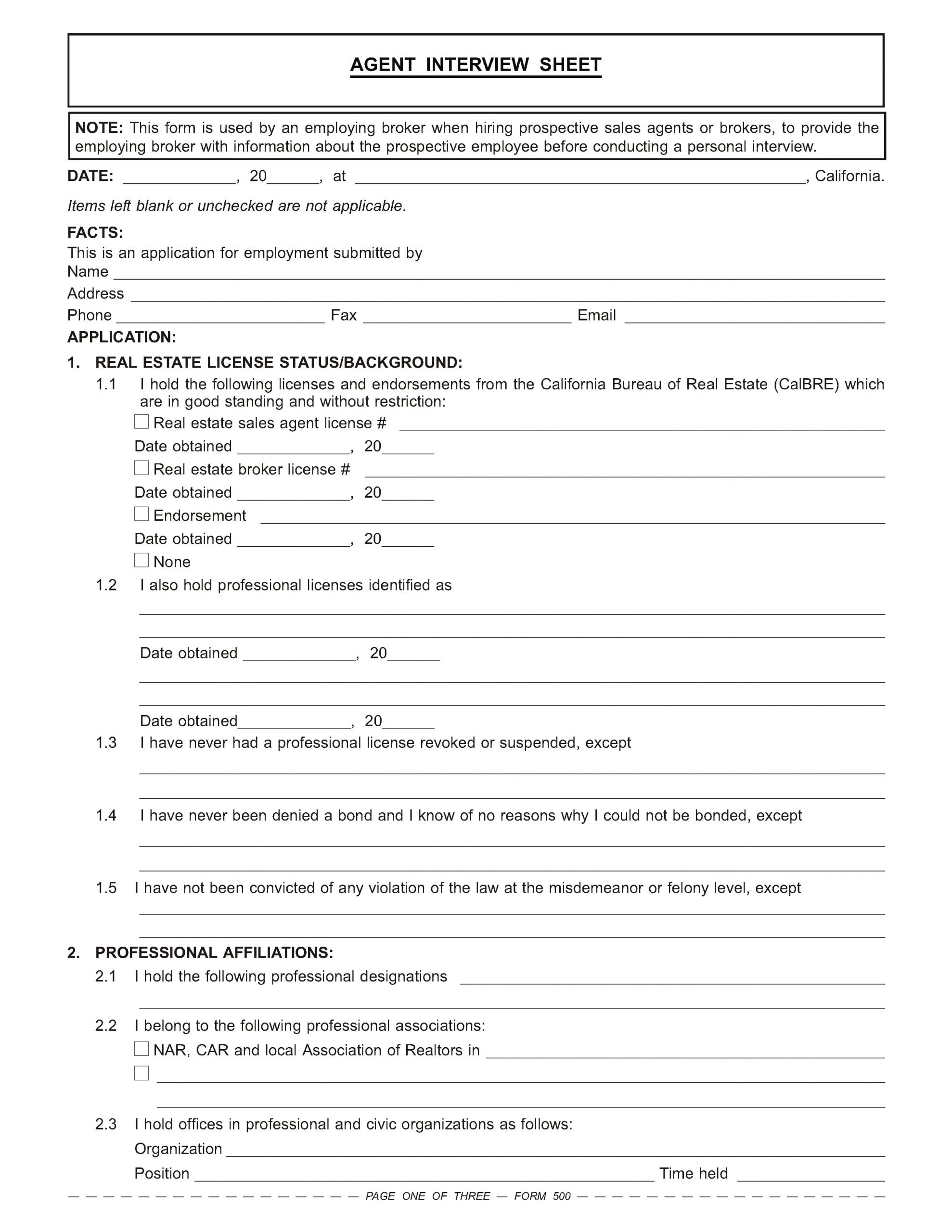A broker’s process of recruiting
No matter the size of the brokerage office, a real estate broker has an obligation to increase revenue by recruiting new talent — agents and broker-associates.
The practice of recruiting falls within a broker’s business model, which includes:
- administrative rules;
- procedural rules;
- substantive rules;
- compliance checks; and
- supervisory oversight. [See RPI e-book Real Estate Practice Chapter 1]
Recruiting activities are typically nested under the first category — administrative rules. The administrative category covers the general business operations of the brokerage office, including office routines, phone and email management, agent interviews, goal setting and daily work schedules.
Business models often vary between brokerages. For example, some brokers hire as many employees as they can squeeze into their offices, while others recruit only agents and broker-associates with track records that exceed typical production standards.
Regardless of how the broker’s business model takes shape, the broker’s process of recruiting always includes:
- a recruiting goal;
- a plan of action; and
- minimum standards.
A recruiting goal enables the broker to plan:
- the number of agents and broker-associates to hire;
- how the broker will plan for office space requirements; and
- how the broker will locate the new hires.
The types of hires available to brokers include:
- pre-license prospects who are aspiring agents;
- newly licensed agents who need training;
- inactive licensees who had previously been active; and
- experienced agents who want a boost.
Once the broker sets their recruiting goal, they next prepare a plan of action.
The plan determines:
- who is in charge of soliciting potential recruits;
- the source of the prospects;
- the media used to solicit recruits; and
- the scripts used to solicit, set appointments with and interview prospects.
Once the plan is set in motion and the interviewing begins, how does a broker decide who to hire? Minimum standards vary by brokerage office and by the type of hire a broker is recruiting. Either way, the broker needs to define their standards based on their goals. The quality of the broker’s team ultimately reflects the broker — the coach, mentor and employer who is ultimately responsible for the effectiveness of all on their staff. [See RPI e-book Office Management and Supervision Chapter 2]
Related article:
Soliciting and interviewing prospective hires
The next step in the broker’s recruiting process is soliciting and interviewing potential hires.
The most effective methods for soliciting new hires vary by the type of hire the broker is recruiting.
For example, pre-license prospects may be recruited rather informally at job fairs, internet job boards and community adult schools and colleges. However, when recruiting newly licensed agents or inactive licensees, mailing a letter is preferable. Experienced agents and broker-associates, on the other hand, are best recruited through personal contact, such as through a direct phone call.
Related article:
Once a prospective hire has been located, the interview will follow.
But before calling an applicant in for an interview, a prudent broker will choose to vet the prospect. This step allows the broker to gauge the prospect’s individual potential at their office and determine whether a face-to-face interview is worth their time.
The broker gathers fundamental preliminary information about the prospect by giving the Agent Interview Sheet to the potential hire to complete remotely. [See RPI Form 500]
When the prospect completes and returns the Agent Interview Sheet, their conduct indicates they are legitimately interested in being hired at the broker’s office — rather than merely probing the job market.
The Agent Interview Sheet asks prospective hires to provide information on their background, education and real estate-related activities. With this information in hand, the broker obtains critical information about the qualifications of the prospective employee and determines whether an interview will ultimately go forward. [See RPI Form 500]
When the broker conducts the interview with the prospect, they determine whether the prospect is a good match by:
- assessing their characteristics;
- determining how their traits align with the broker’s own goals and expectations;
- revealing the prospect’s income and expenses they are likely to experience in their first year under the broker [See RPI Form 504]; and
- verifying the information contained in the Agent Interview Sheet with the prospect. [See RPI Form 500]
Related article:
When the broker decides to hire the recruit, and the recruit is licensed by the Department of Real Estate (DRE) as a salesperson or broker-associate, they are entitled to a share of the fees received by the broker on sales, leases or mortgage originations in which the agent or broker-associate participated. [See RPI Form 505]
An agent’s right to a fee arises under the agent’s written employment agreement with their broker. [See RPI Forms 505 and 506]
When a broker wants to use pay and tax withholding arrangements, they use an employee agreement form to document the employment of their agents. [See RPI Form 505]
On the other hand, when a broker wants to avoid withholding, and instead calls for the employee to be treated for tax purposes as an independent contractor (IC), they use an IC agreement to document the employment. [See RPI Form 506]
The final step in soliciting and interviewing a prospective hire is to review the terms of employment with the prospect, including how the fees owed to the prospect will be allocated and shared. [See RPI Form 505 and 506]
When a sales agent or broker-associate signs the employee agreement form, the broker and the employee both agree to the terms set forth in the required employment agreement. At this stage, the prospective hire now becomes the broker’s employee. [See RPI Form 505]
Related Video: Right to a Fee
Click here for more information on this topic.
Pre-screening prospects with the agent interview sheet
An employing broker uses the Agent Interview Sheet published by RPI (Realty Publications, Inc.) when hiring prospective sales agents or brokers. The sheet provides the employing broker with information about the prospective employee before conducting a personal interview. [See RPI Form 500]
The Agent Interview Sheet collects personal information on the prospect, including their:
- real estate license status and background, including:
- their DRE license number and the date it was obtained [See RPI Form 500 §1.1];
- other professional licenses or endorsements they hold [See RPI Form 500 §1.2]; and
- any negative actions taken against the licensee or the existence of a criminal record [See RPI Form 500 §§1.3-1.5];
- professional affiliations [See RPI Form 500 §2];
- educational levels attained [See RPI Form 500 §3];
- real estate activity conducted, including:
- real estate, mortgage or business opportunities the prospect has an interest in [See RPI Form 500 §4.1];
- a description of the types of real estate services previously rendered by the prospect [See RPI Form 500 §4.2];
- the identity of former brokers who employed the prospect, and the duration of those employments [See RPI Form 500 §4.3];
- a description of the real estate clientele the prospect has previously and presently worked with [See RPI Form 500 §4.4]; and
- the reason the prospect wants to be employed with your brokerage [See RPI Form 500 §4.5];
- personal contacts who are connected to your brokerage and the prospect’s non-relative references [See RPI Form 500 §5];
- conditions of employment for the prospect to agree to, including:
- the prospect’s commitment to pay dues and fees to professional organizations you designate [See RPI Form 500 §6.1];
- whether the prospect will be employed on a full-time or part-time basis [See RPI Form 500 §6.2];
- the prospect’s commitment to abide by the provisions of the attached employment agreement, when they are hired [See RPI Form 505 and 506; See RPI Form 500 §6.3];
- the requirement that the broker will be an additional named insured by the prospect’s auto insurance carrier [See RPI Form 500 §6.4]; and
- when the prospect will be available to start work. [See RPI Form 500 §6.5]
Related article:
Form of the Week: Agent Interview and Income Data Sheet — RPI Forms 500 and 504
Hiring with a written employment agreement
An employing broker uses the Sales Agent and Broker-Associate Employee Agreement published by RPI when entering into an agreement employing a sales agent or a broker-associate on terms calling for income tax withholding and tax treatment as an employee. The agreement establishes the duties of the broker and the employee, earned fees and how fees due the employee will be allocated and shared. [See RPI Form 505]
The employee agreement sets forth the terms of employment, including the:
- agent’s status as an employee for tax and employment purposes [See RPI Form 505 §1];
- provisions the agent is required to agree to as conditions of employment [See RPI Form 505 §2];
- provisions the broker is required to agree to as the agent’s employer [See RPI Form 505 §3];
- general provisions of both agent and broker [See RPI Form 505 §4];
- broker’s fee schedule information controlling the percentage and dollar amounts owed to and deducted from the agent [See RPI Form 505 §5]; and
- signatures of the agent and broker.
Related article:
Form of the week: Agent and Broker-Associate Employment Agreements — RPI Forms 505 and 506
Alternatively, brokers may negotiate fee sharing arrangements which call for the use of an independent contractor (IC) agreement to document their employment of agents. [See RPI Form 506]
An IC agreement, in contrast with an employee agreement form, is used to avoid withholding and employer contributions by real estate brokers. [See RPI Form 506 §2.13]
Despite the labels given to these agent employment forms, an agent or broker-associate is always an employee of the broker under California’s labor law. Thus, the broker is liable as an employer for their agent’s wrongful conduct. Even when an IC agreement is used to document the employment, an agent may not permissibly act independent of the broker. The broker employing agents using an IC agreement still owes a duty of supervision to the agent as well as a mandated worker’s compensation policy. [See RPI Form 506]
An employing broker uses the Independent Contractor (IC) Employment Agreement published by RPI when entering into an agreement employing a sales agent or a broker-associate on terms calling for the employee to be treated for tax purposes as an independent contractor. The agreement establishes the duties of the broker and agent, earned fees and how the fees due the employee will be allocated and shared. [See RPI Form 506]
The IC agreement sets forth the terms of employment, including the:
- agent’s status as an independent contractor for tax purposes [See RPI Form 506 §1];
- provisions the agent is required to agree to [See RPI Form 506 §2];
- provisions the broker is required to agree to [See RPI Form 506 §3];
- general provisions of both agent and broker [See RPI Form 506 §4];
- broker’s fee schedule information controlling the amounts owed to and deducted from the agent [See RPI Form 506 §5]; and
- signatures of the agent and broker.
Related article:
Want to learn more about recruiting and interviewing prospective agents? Click an image below to download the RPI books cited in this article.



















